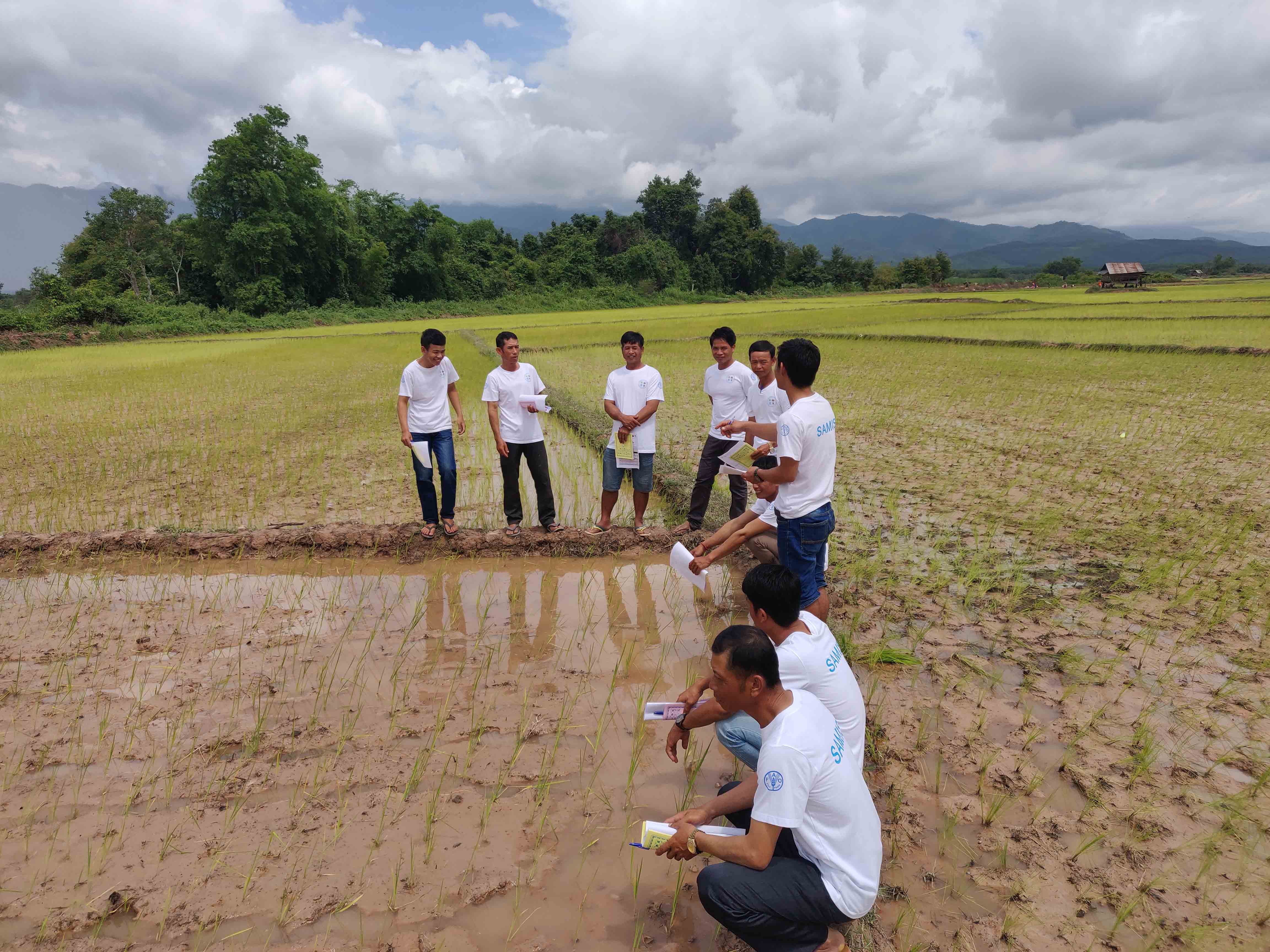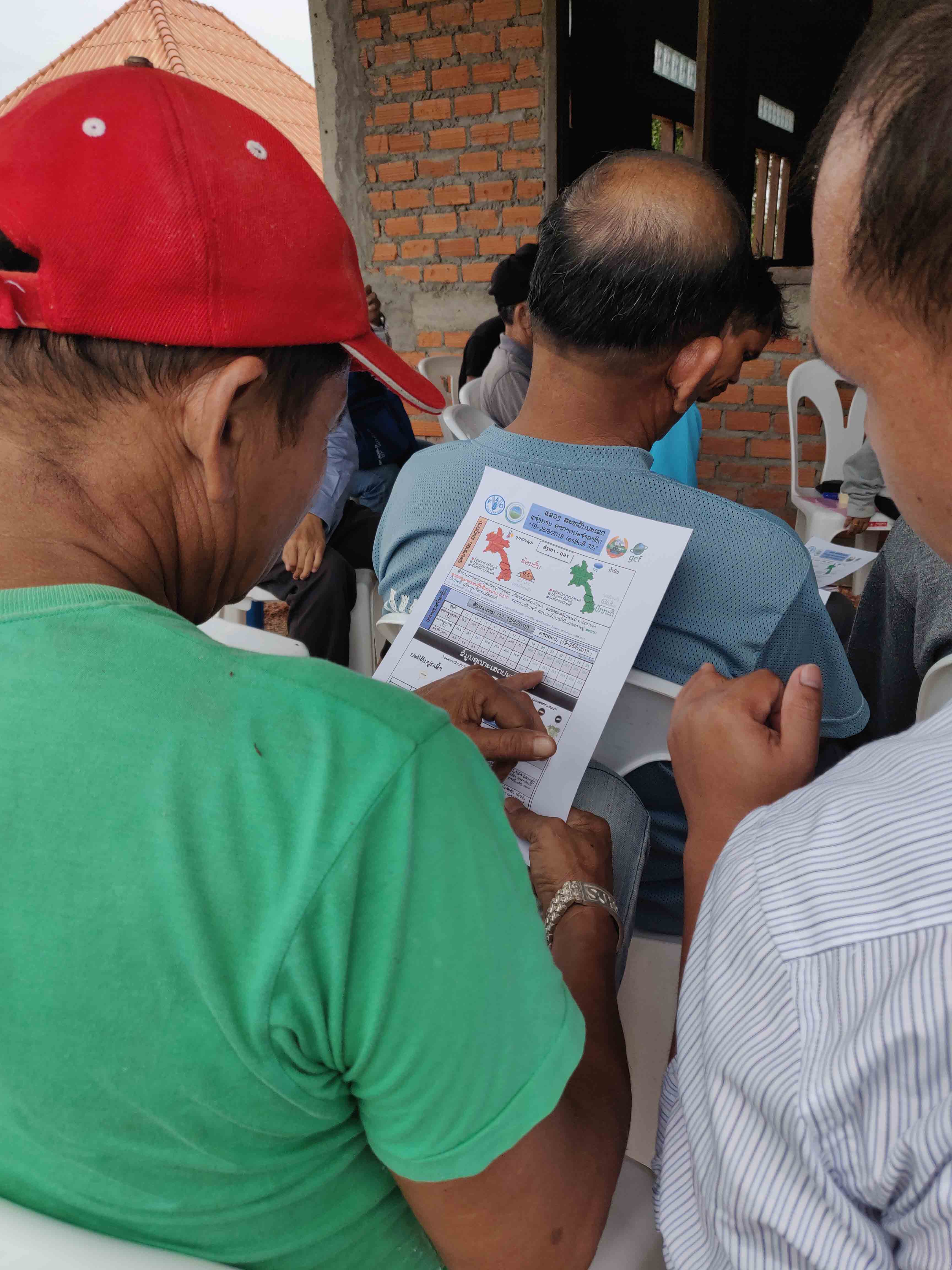When the water level falls, the ants eat the fish – when the water level rises, the fish eats the ants
It’s a simple Lao saying packed with metaphorical implications but also serves as a commentary on the cyclical nature of weather, climate, and seasons. The adage may also be a perfect metaphor for the challenges of life for farmers in Laos.
No doubt the weather, the conditions, and the climate affect us all. This is also particularly true for farmers, their families, and those rural communities who rely on friendly weather conditions to produce food and fiber for their families and hungry consumers.
The hopes and joys of a successful harvest can easily turn to fears and frustrations of extreme droughts and flooding rains. Now, access to more accurate weather forecasts and advice can make all the difference between success and failure and prevent losses of life and livelihoods as well as crops, seeds and livestock.

Fortunately, with scientific advancements, this information is more readily available than ever before and that, too, at the touch of a button. Laos has made significant progress in making this information available via the easy to use free, online, and mobile-accessible Laos Climate Services for Agriculture (LaCSA) system.
Mrs. Outhone Phetluangsy, Director-General of the Department of Meteorology and Hydrology of the Ministry of Natural Resources and Environment leads this initiative supported by the Food and Agriculture Organization of the United Nations (FAO).
“LaCSA allows Lao farmers, fishermen, and ranchers to get the latest weather forecasts down even to the provincial and district levels across the country, as the system brings the data from all weather stations in the country together in one database, and then makes it accessible to all,” says Mrs. Outhone.
Weather and climate models are used to generate accurate short and medium-term as well as seasonal forecasts using newly collected data and historical information. When combined with agronomic data, the result provides useful additional information for farmers, such as advice for specific crops in their districts.
The system generates and delivers these services by combining meteorological and agricultural information on soil, crop, pest, and disease data. Advice and warnings pertinent to farmers and agricultural sector stakeholders can be delivered, offering recommendations for growing the most widely grown crops in Laos, such as rice, cassava, maize, coffee, banana, and cabbage.
Pest and disease risks and management advice is available, while crop-specific indices such as the estimated number of plant-growing and maturation days (Growing Degree Days, GDD), and crop yield forecasts with respective recommendations.

And while access to a smartphone is becoming increasingly common for information-hungry farmers, it is not necessary for them to get this information via phones because at the village level, the forecast bulletins are read on the village’s public announcement system. In fact, an experienced broadcaster from the Lao National Radio has trained village-level officials to read information to farmers fluently and share information effectively. Provincial-level weather forecasts are also featured on television news broadcasts filmed in the department’s very own studio.
Mrs. Outhone Phetluangsy, Director-General of the Department of Meteorology and Hydrology points out, “the best part is that all of this information is available for free. People working in other sectors and organizations can access high-quality climate information for their own use. Even tourists traveling in Laos can get accurate weather forecasts down to the district they are traveling in.”
This is great news for everyone. Like in the Lao proverb when the rain falls, rivers rise, and fish eat ants, humans have the ability to remain safe, dry, and happy.
MORE INFO
All information is provided free of charge as weekly or
monthly bulletins. The demo LaCSA system is available
at http://147.46.250.219:8081/
This tool is produced by the Department of Meteorology (DMH). For regular updates go to facebook.com/samisdmh
LaCSA is supported by the Food and Agriculture Organization of the United Nations (FAO) and the Global Environment
Facility (GEF) funded Strengthening Agro-climatic Modeling and Information Systems (SAMIS) project.
Text BY Francis Savanhkham
PHOTOGRAPHS BY Phoonsab Thevongsa / Monica Petri



 ລາວ
ລາວ
